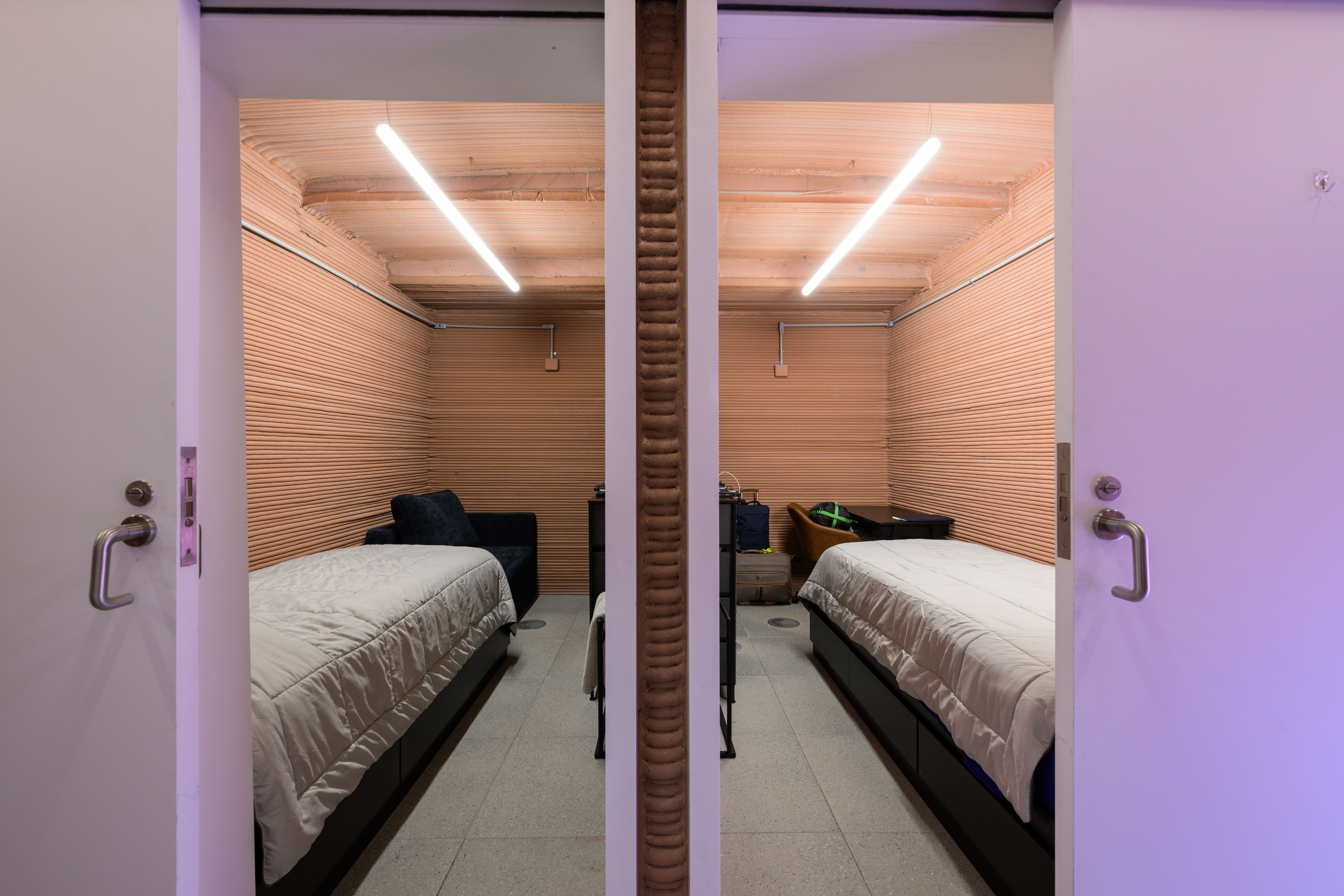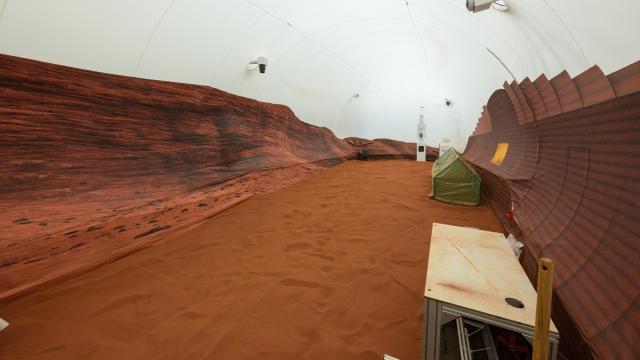On Sunday, four researchers donned black jumpsuits and entered into a red world where they will spend a year living and working in a simulated Martian environment.
NASA’s CHAPEA habitat, or Crew Health and Performance Exploration Analogue, welcomed its volunteer guests this week, who are set to spend 378 days in the enclosed, Mars-like world to help the space agency prepare for future missions to the Red Planet.
“I feel incredibly lucky and blessed to be a part of this crew and the mission,” research scientist Kelly Haston, one of the four participants in the ongoing study, said during a press briefing before entering the habitat. “It is a career and personal highlight to be both scientist and test subject and produce data that may enable new methods and safer space travel.”
CHAPEA’s 4 person crew just entered their home for the next year. They’re simulating a Mars mission to help assess health and performance in relation to Mars resource limitations in isolation and confinement. The door is officially closed and the mission has begun. Go Crew 1! pic.twitter.com/KKWKQ1opwg
— NASA’s Johnson Space Center (@NASA_Johnson) June 25, 2023
Hatson, along with structural engineer Ross Brockwell, emergency medicine physician Nathan Jones, and U.S. Navy microbiologist Anca Selariu, were selected in April for the study. NASA had sent out a call for volunteers in 2021 for “healthy, motivated” U.S. citizens between the ages of 30 to 55 to take part in the first of three year-long missions.
The 3D-printed, 1,700-square-foot habitat is located at NASA’s Johnson Space Centre in Houston, Texas. It has a kitchen, two bathrooms, private bedrooms, a work area, as well as a recreational area for socialising.
“The habitat will simulate the challenges of a mission on Mars, including resource limitations, equipment failure, communication delays, and other environmental stressors,” NASA wrote in a statement.
Inside the simulated Martian environment, the four volunteers will carry out different activities as though they were on a mission to Mars, including simulated spacewalks, robotic operations, habitat maintenance, personal hygiene, exercise, and crop growth.
“The analogue is critical for testing solutions to meet the complex needs of living on the Martian surface,” Grace Douglas, lead scientist for NASA’s Advanced Food Technology research effort at NASA’s Johnson Space Centre in Houston, said in a statement. “Simulations on Earth will help us understand and counter the physical and mental challenges astronauts will face before they go.”

NASA, with the help of its international partners, eventually hopes to send humans to Mars and possibly establish a sustainable presence of astronauts in habitats on Earth’s neighbouring planet. Mars is a dry, arid desert with a thin, carbon-dioxide-filled atmosphere and freezing temperatures during its winter season. Those other-worldly factors are likely to make astronauts’ time on Mars a little rough, which is why the space agency wants to be prepared for the challenges ahead.
“The simulation will allow us to collect cognitive and physical performance data to give us more insight into the potential impacts of long-duration missions to Mars on crew health and performance,” Douglas said. “Ultimately, this information will help NASA make informed decisions to design and plan for a successful human mission to Mars.”
